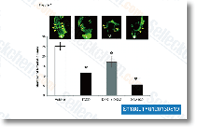Also, the review demonstrates the eect of CNI nephrotoxicity might not be clinically evident right up until the 2nd decade right after transplantation. Substantially has also been manufactured just lately on the nonspecic nature in the histopathological lesions purported to indicate evidence of CNI nephrotoxicity. Whereas lots of investigators concede the lesions of arteriolar hyalinosis happen with continual CNI toxicity, they are existing in many other renal pathological problems and may additionally be current on the time of transplantation because of donor relevant disorder. A recent review from France XL765 molecular weight has demonstrated that the lesions described by Nankivell and colleagues as being characteristic of CAN and chronic CNI toxicity are noticed in individuals who’ve not been exposed to a CNI. However, when com paring biopsies from patients who were obtaining CNIs and these on sirolimus, the lesions of CNI arteriolopathy have been much more popular in people patients getting CNI therapy.
Rationale for mammalian target of rapamycin inhibitor use Entinostat in renal transplantation Mammalian target of rapamycin inhibitors are actually proven to get eective immunosuppressant agents in renal transplantation both in blend by using a CNI or not. The primary rationale for working with these agents in a CNI absolutely free regimen should be to stay clear of the adverse occasions connected with CNI use, in particular continual nephro toxicity. There’s, however, accumulating proof the avoidance of CNIs and the utilization of mTOR inhibitors also confer benets with respect on the development of malignancy and also some submit transplant infections. Result of mTOR inhibitors on publish transplant renal function The rst review to demonstrate the benecial eect of long lasting CNI no cost mTOR inhibitor primarily based treatment in renal transplantation was the Rapamune Upkeep Routine study.
Sufferers have been randomised at three months to either continue a regimen of SRL, CsA and steroids, or to get CsA withdrawn with an increase inside the concentration in the targeted dose of SRL. Despite the fact that 525 individuals entered this review, 95 were not randomised since of signicant rejection while in the rst three months or mainly because of poor transplant  perform. The randomised sufferers were thus a group chosen for favourable outcomes. Nonetheless, despite having numerically greater numbers of rejections in the 3 months just after randomisation, at four many years the individuals in whom CsA was withdrawn had superior renal perform and graft survival in contrast with those who continued the combination of CsA and SRL. In addition, protocol biopsies carried out at 36 months showed much less CAN from the CsA withdrawal group. A single valid criticism of this review is that the manage arm of CsA and SRL is even more nephrotoxic and would therefore supply an unfair comparator for each renal perform and structure.
perform. The randomised sufferers were thus a group chosen for favourable outcomes. Nonetheless, despite having numerically greater numbers of rejections in the 3 months just after randomisation, at four many years the individuals in whom CsA was withdrawn had superior renal perform and graft survival in contrast with those who continued the combination of CsA and SRL. In addition, protocol biopsies carried out at 36 months showed much less CAN from the CsA withdrawal group. A single valid criticism of this review is that the manage arm of CsA and SRL is even more nephrotoxic and would therefore supply an unfair comparator for each renal perform and structure.
MMPs signal
MMPs is made up of the following homologous domains
